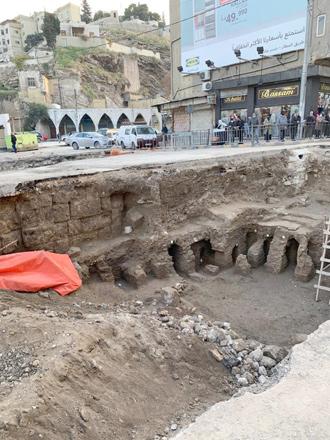- Local News
- Sun-2020-12-27 | 02:59 pm

A recent discovery of a Roman bath and crematorium in downtown Amman shed more light on the history of the capital, according to a Jordanian archaeologist.
For the time being local experts involved with the excavation did not announce artifacts that may have been found at the site.
The Roman bath was discovered during the works of installing a water drainage system in the downtown area by the Great Amman Municipality, Professor Emeritus Zeidan Kafafi told The Jordan Times.
The issue of conservation and preservation of the bath with heated cellars and crematorium dating from 2nd century AD is important, he said, adding that a better methodological approach to archaeological sites management is needed.
"We in the cultural heritage field believe that conservation, preservation and presentation of archaeological sites benefit society. This has been explained as 'conserving our cultural heritage provides us with a greater understanding of our identity, of the continuity of humanity, and of our place in the world and in time'," Kafafi said.
The scholar called for developing conservation policies based on prior studies before the fieldwork research.
"It might be assumed that material culture of the past, have the capability of a story-telling. It is not only the material that reflect the history of a nation, but also the sites themselves are having the potential to inform our understanding of human and social evolution," he said, adding that scholars should be involved in protecting of our national heritage.
Increased cooperation among professionals, decision-maker and community members is essential for the outcome and sustainability of conservation efforts, Kafafi noted.








